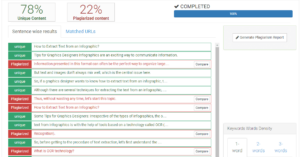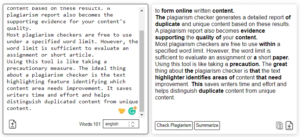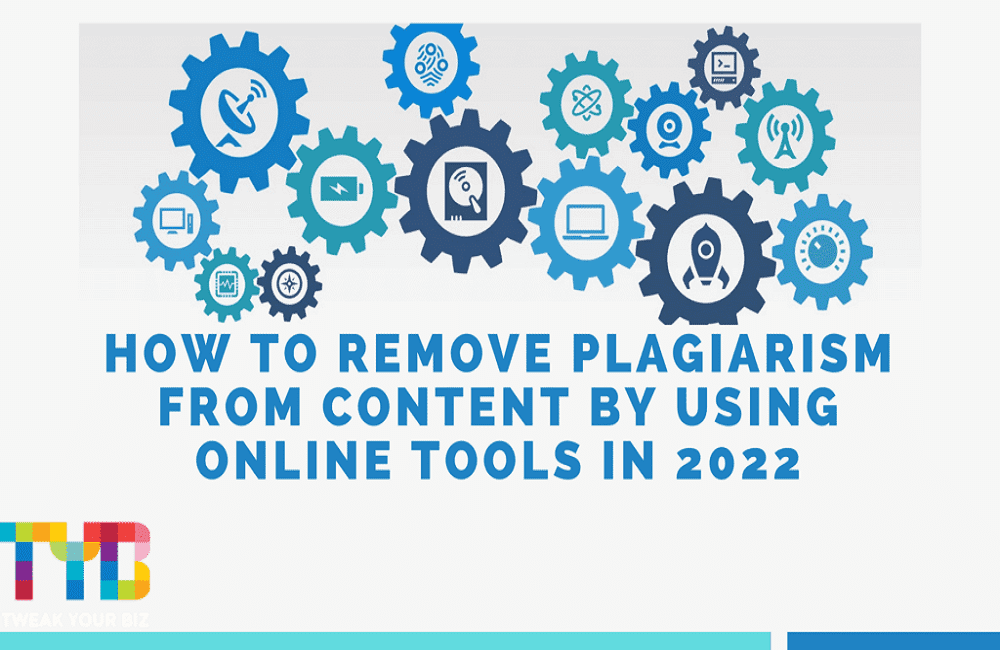The biggest concern of a writer is plagiarized content in their work. Before publishing the content online, you have to ensure several factors to guarantee the originality of your work.
The concerns and challenges are identical for the content writers, content marketers, students, bloggers, and teachers. If you’re related to these professions,
Online tools are beneficial in identifying plagiarism from various sources. You’ll find several tools like plagiarism checker, rewriting tools, and citation tools to make your content plagiarism-free.
In this article, we will discuss removing plagiarism from content by using online tools. Moreover, we will present the reasons to avoid plagiarism in your work and the consequences of publishing plagiarized content.
Types of Plagiarism
Plagiarism is further categorized in various categories, and every writer should be familiar with it to avoid plagiarism in the first place:
-
Direct Plagiarism
Directly copy-pasting someone else’s content featuring the same structure and words without any quotation marks can land a form of direct plagiarism. It commonly occurs if the writer is not familiar with the correct way of referencing and citation.
-
Self-Plagiarism
This type of plagiarism is more common among web content writers and academic writers. Submitting a copy of your work or trying to rewrite your previous work can result in self-plagiarism.
-
Mosaic Plagiarism
If you don’t know how to paraphrase appropriately, it’s possible to fall victim to mosaic plagiarism. If you’re doing patchwriting by reading information from another source and adding your own words to make it unique, then it falls under the indications of mosaic plagiarism.
How to Remove Plagiarism Using Online Tools
Now let’s discuss the functioning of several online tools you can use to deal with the problem of plagiarism:
-
Using Plagiarism Checker

First, you need to identify the amount of duplication in your content with an online plagiarism checker.
This tool highlights the plagiarized content by identifying the actual source of the similar section from online web pages.
Furthermore, some plagiarism checkers also identify spun text or restructured text as having similarities to written content formation online.
A plagiarism checker generates a detailed report on duplicated content and unique content based on these results. A plagiarism report also becomes the supporting evidence for your content’s quality.
Most plagiarism checkers are free to use under a specified word limit. However, the word limit is sufficient to evaluate an assignment or short article.
Using this tool is like taking a precautionary measure. The ideal thing about a plagiarism checker is the text highlighting feature identifying which content area needs improvement. It saves writers time and effort and helps distinguish duplicated content from unique content.
-
Using Paraphrasing Tools
Once you have identified the problem with the help of one tool, let’s talk about dealing with it using another efficient online tool.

An online paraphrasing tool offers a unique set of options to deal with plagiarism by rephrasing the sentences. This tool retains the original meaning of content by featuring a unique set of words in writing.
The paraphrased section in your content is highlighted to compare changes made in the original content.
In contrast to that, a paraphrasing tool converts particular words and phrases with the most relevant synonyms. You’ll find several writing options to make your content unique with a paraphrasing tool.
You can select a writing style that suits your niche best and produce unique content from an authentic source. Paraphrasing tools may have word limitations per usage, but these tools can make your hours of effort a matter of seconds.
-
Citation Tools
In-text citation and referencing are the best ways to deal with plagiarism, especially in academic writing. Students are often provided guidelines to follow a specific citation style in their assignments.
Featuring a quotation in your writing without a reference can commit direct plagiarism. It is best to cite the source with that featured piece of writing to avoid plagiarism.
But if you are unfamiliar with the correct way of citing a source, you may land in trouble for committing plagiarism. Therefore, academic writers and content writers can rely on the citation generator to include correct citations.
Why is it Important to Avoid Plagiarism in Content?
Plagiarism is considered theft, whether in your marketing content or academic writing. The consequences can vary depending on the area where plagiarism is found. It’s deemed to be unethical according to law and brings consequences such as heavy fines.
Copyright Infringement
If you have duplicated copyright-protected content, it may get even worse. The original content owner can claim copyright protection and file a lawsuit against you for stealing their property.
Search Engine Ranking
Google Search Engine has clearly stated plagiarism-free web content as a ranking factor in SERPs. Suppose a marketing website or blog steals content from a ranking website to improve visibility. But it can backfire by penalizing you with temporary or permanent penalization for posting online.
Personal Reputation
Running a brand image or marketing campaign is all about building the trust of your customers. If your content is duplicated from other online sources, it can put your whole marketing strategy in vain.
Marketing campaigns heavily rely on content. Therefore, if your content is similar to a ranking website in reading sense and sentence formation, then you may lose the claim of originality and confidence in your consumer market.
Conclusion
Dealing with plagiarism may seem like a hectic job if you’re trying to do it independently. But with the help of online tools, you can save a lot of time and effort and achieve accurate results.
Various online tools provide free access to deal with plagiarized content. Therefore, it’s recommended to make the best of these tools for quality writing.


